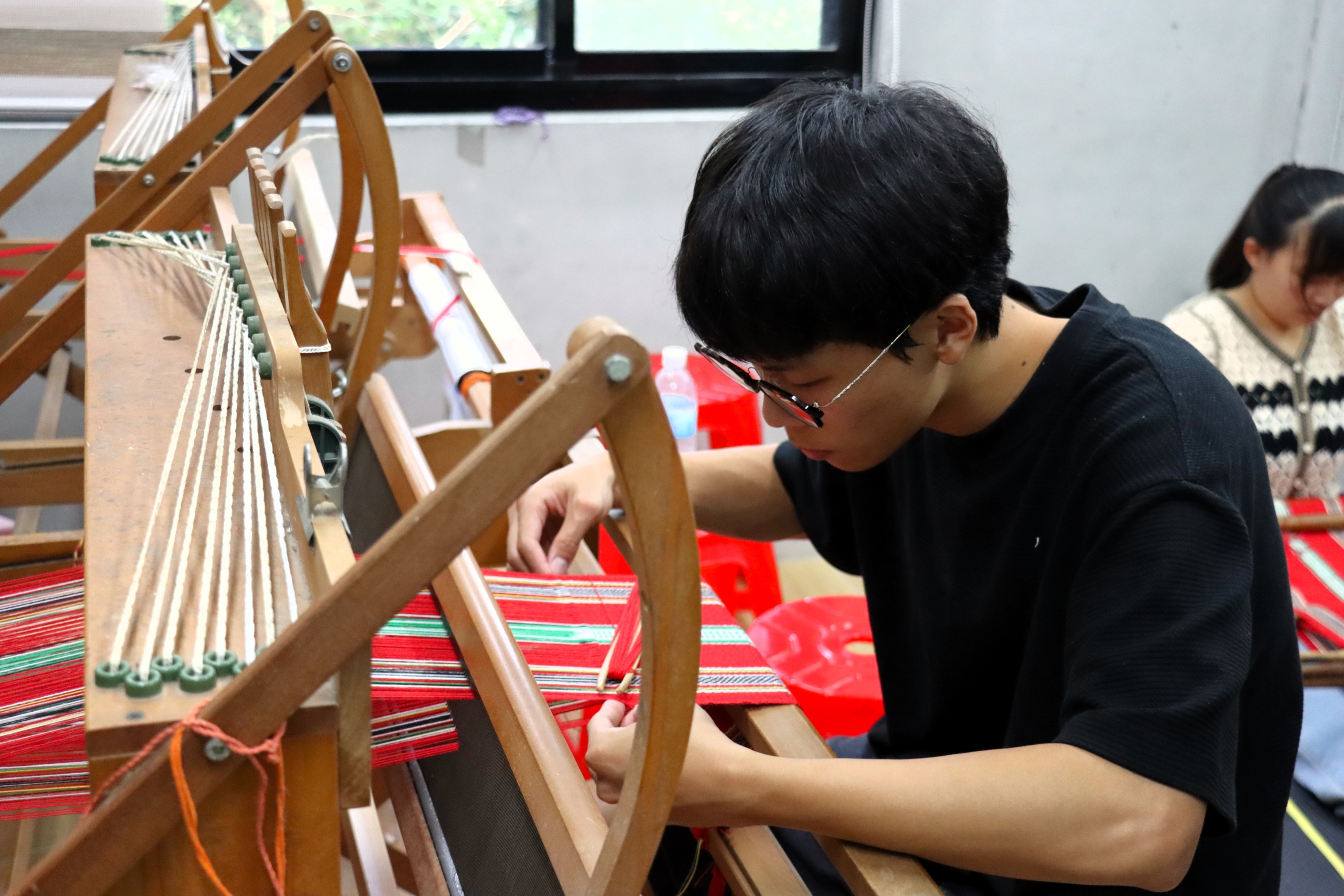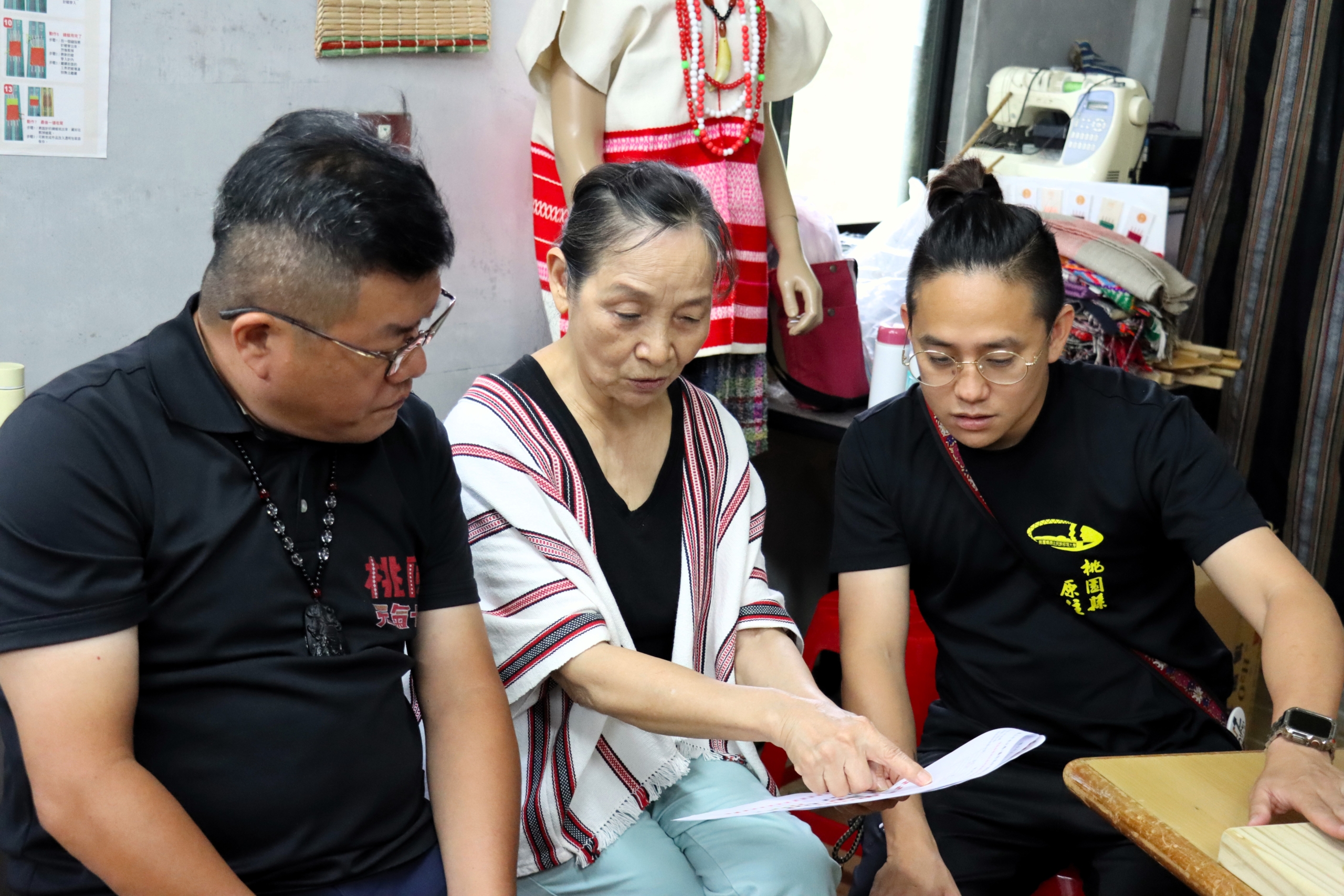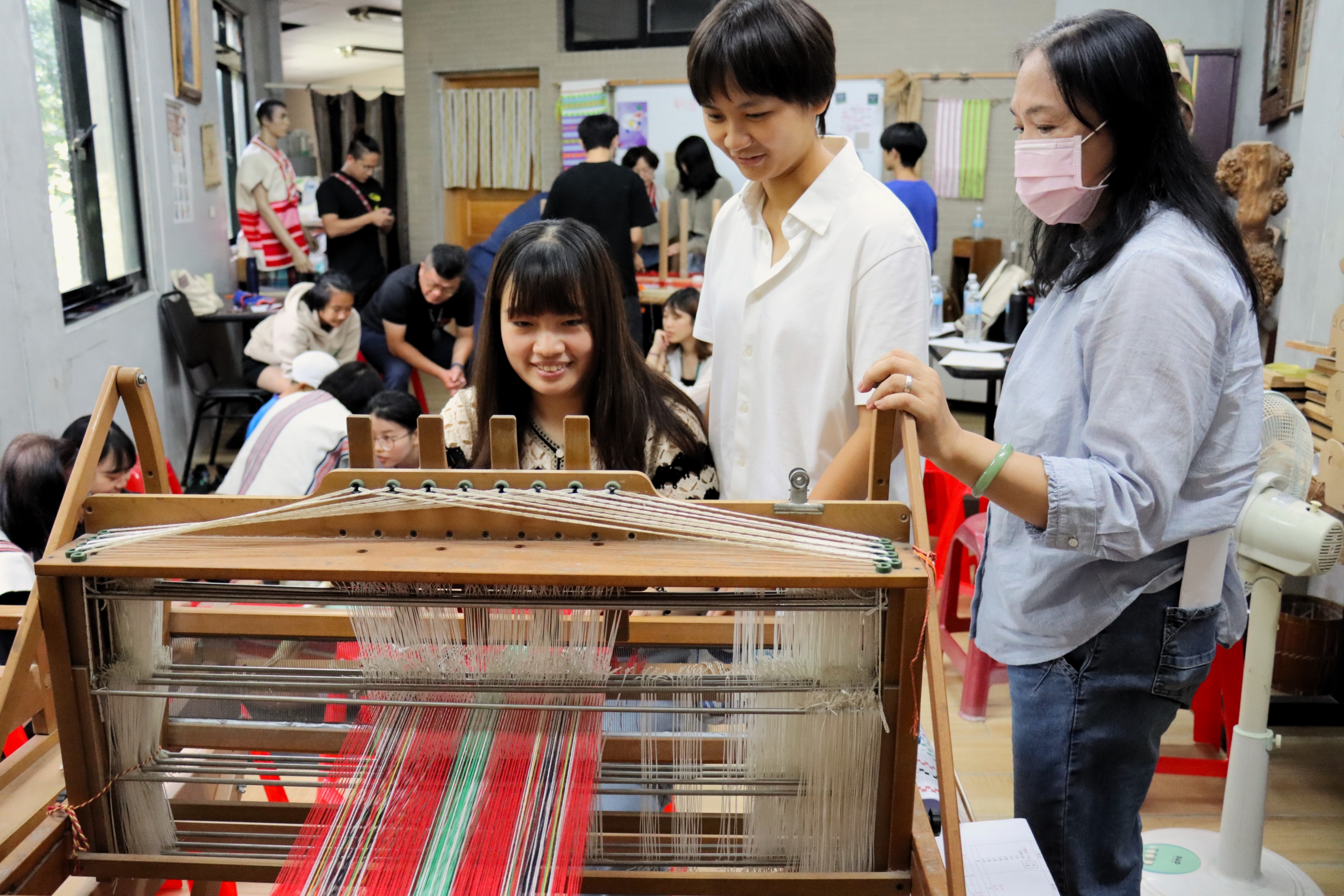Building on last year’s experience, this year the process of coordinating with the weaving teachers from Luofu High School and Wulai went much more smoothly. There was significant improvement in both contingency measures and itinerary planning. We spent an entire semester carefully preparing, arranging courses, and frequently communicating with the teachers from Wulai and Luofu High School, aiming to ensure that the students would learn the most comprehensive and rich weaving techniques in just two days.
The preservation of Atayal weaving culture is part of the USR program, and I feel incredibly honored to be a part of it. Assisting in the transmission of this soon-to-be-lost skill not only helps Atayal youth reconnect with their culture but also allows them to appreciate the wisdom of their ancestors and promote the continuation of this craft.
In the past, we arranged courses on the cultivation, harvesting, scraping, and twisting of ramie, but this time in Wulai, we prepared a more systematic teaching plan that included stem preparation, organizational chart drawing, operating looms, plant dyeing, and bead stringing. Seeing the Luofu High School students focus intently on learning weaving techniques and asking questions about the background and origins of these skills truly touched me. The only regret is that the Atayal language has no written record, and many techniques can only be passed down through memory and oral tradition. Due to changing times, many teachers are searching for these lost skills in different places, rediscovering them as precious aspects of Atayal culture and ancestral wisdom.
“It’s not that boys can’t weave; it’s that if boys don’t learn, this skill will disappear!” the teacher humorously remarked. Traditionally, weaving has been a female-dominated craft while men were responsible for hunting. However, if we continue to restrict this beautiful and unique culture to women in modern times, it will gradually vanish. What reassured me was that the male students from Luofu High School not only showed interest in learning but were also very engaged, making me feel hopeful as a contributor to cultural preservation.
Seeing each student leave with new skills, I sincerely hope they will continue to pass on this craft, allowing Atayal weaving culture to thrive and grow ever more beautiful!
Text by Liu, Shu-Yu
Edited by Li, Ruo-Jia
Photos by Li, Ruo-Jia
Under the leadership of Teacher Wang Hsiu-Ling and with strong support from the school, the Luofu High School Weaving Club is dedicated to teaching weaving techniques to members interested in Atayal culture. The club mainly uses tabletop looms for basic instruction. To give students a deeper understanding of traditional Atayal weaving and higher-level techniques, we arranged for club members to travel to Wulai to learn from local teachers.
On the first day of the activity, we invited Teacher Gao Lin Mei-Feng to her Daka Workshop to introduce the unique patterns of the Atayal tribe and their meanings, as well as share tips on fabric color matching. At the same time, students learned how to prepare and weave on traditional horizontal looms, experiencing the improved tabletop looms as well. Additionally, many other teachers participated, sharing that they had established their workshops after retirement with the goal of passing down this skill through generations. Seeing young tribespeople come to learn brought immense joy to the teachers.
On the second day, we took students to Teacher Wang Hsiu-Chin’s Yu Nai Workshop to learn about dyeing fabrics with sago palms, and at the end of the course, they made beaded bracelets as souvenirs. The students displayed boundless creativity, showcasing high levels of imagination in both dye pattern design and bead color combinations, creating their own unique works.
After two days of classes, students reported that they had learned a lot, gaining a deeper understanding of Atayal culture and expressing a desire for more similar learning opportunities. We are very grateful to Professor Cai Xi-Zheng and the school’s USR program for their support, which made this event successful. We also thank the Atayal teachers for generously sharing their skills and patiently guiding the students, bringing this event to a satisfying conclusion.
Text by You, Mei-Chi
Edited by Li, Ruo-Jia
Photos by Li, Ruo-Jia










